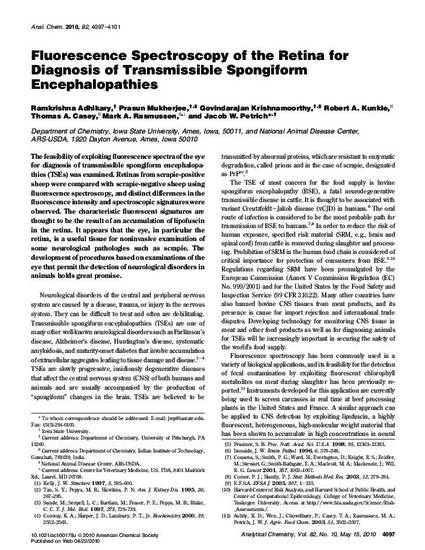
The feasibility of exploiting fluorescence spectra of the eye for diagnosis of transmissible spongiform encephalopathies (TSEs) was examined. Retinas from scrapie-positive sheep were compared with scrapie-negative sheep using fluorescence spectroscopy, and distinct differences in the fluorescence intensity and spectroscopic signatures were observed. The characteristic fluorescent signatures are thought to be the result of an accumulation of lipofuscin in the retina. It appears that the eye, in particular the retina, is a useful tissue for noninvasive examination of some neurological pathologies such as scrapie. The development of procedures based on examinations of the eye that permit the detection of neurological disorders in animals holds great promise.
Available at: http://works.bepress.com/jacob_petrich/36/

Reprinted (adapted) with permission from Analytical Chemistry 82 (2010): 4097, doi: 10.1021/ac100179u. Copyright 2010 American Chemical Society.